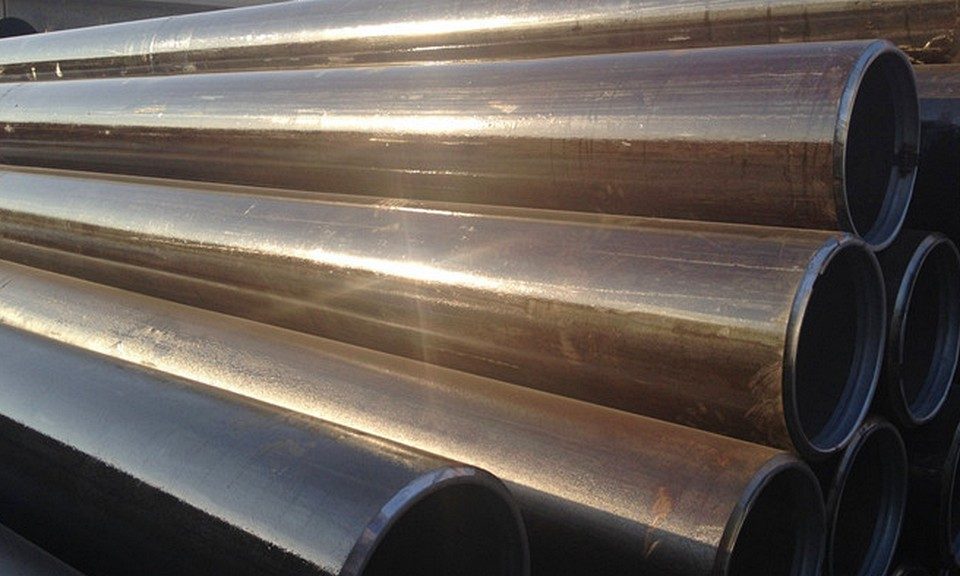
ASTM A252 piling pipe Grade 3 OD 219mm
September 30, 2016
ASTM A53/A53M Standards Specification for Pipe, NPS 1/4 INCH – 30 INCH ,Schedules 10 -160, STD, XH and XXH Welded and Seamless
October 10, 2016differentce in between ERW pipe and EFW pipeline
A53 SCH40 ERW PIPELINE vs EFW PIPELINE
EFW are considerably different than ERW

Electric Resistance Welded Pipe. Current is then passed between the 2 edges of the steel to heat the steel to a point at which the edges are required together to form a bond without making use of welding filler material. Initially this manufacturing process utilized low frequency A.C. existing to heat the edges. This radio frequency process was used from the 1920’s up until 1970. In 1970, the radio frequency process was superseded by a high frequency ERW process which produced a greater quality weld.
With time, the welds of low frequency ERW pipe was found to be vulnerable to selective seam corrosion, hook cracks, and inadequate bonding of the seams, so radio frequency ERW is not utilized to produce pipe. The high frequency procedure is still being utilized to produce pipe for use in brand-new pipeline building and construction.
Electric Flash Welded Pipeline
Electric flash welded pipe was manufactured starting in 1927. Flash welding was achieved by forming a steel sheet into a cylindrical shape. The edges were heated up until semi-molten, then required together till molten steel was dislodged of the joint and formed a bead. Like low frequency ERW pipe, the joints of flash welded pipeline are susceptible to corrosion and hook cracks, however to a lower degree than ERW pipeline. This type of pipe is likewise susceptible to failures due to tough areas in the plate steel. Since the majority of flash bonded pipe was produced by a single producer, it is thought these tough areas occurred due to unintentional quenching of the steel during the manufacturing process used by that specific maker. Flash welding is not used to manufacture pipe.
A customer defined Sch 40, CS, ERW, ASTM A53-B, type E piping for a low pressure steam piping system we are going to make. They offered the product requisition for exactly what they are buying and the product description is EFW piping. I think EFW piping is ASTM A671. Disregarding the fact they do not appear to be following their own specification, is there a reason they would go with EFW piping? A53-B is typical in this application and easily available. My concern is if the homes of EFW are considerably various than ERW. If it is stronger, exists something at the same time conditions we are unaware of? If it is weaker, are they trying to cut corners?
I do not think the ERW/ EFW has anything to do with the homes of the metal plate for the pipe. ERW and EFW describes the manner/method/type of welding (the plate). R= Resistance and F= Combination hence you would have Electric Resistance Welded Pipe or Electric Fusion Welded Pipe. Both would be made from the exact same plate.
Here is a spec for steel pipe:
There is a perpetual dispute whether seamless is much better than bonded. The arguments usually center on structural stability and corrosion resistance of the weld, intensity of the intended service, NDT and examination requirements and delivery time. In reality, both production techniques can offer the required quality and life span, rust resistance and dependability. Normally bonded tubes are more economical, have narrower tolerances, thinner small wall density, much better concentricity (outer/inner diameter OD/ID), greater internal surface quality and are typically chosen considering that they can be produced in longer lengths with larger sizes. Seamless tubes are needed where heavy wall density is integrated with little diameters making forming of plate or strip complex and where the standard particularly defines seamless.
”Some security codes and regulatory agencies also designate a longitudinal joint aspect to account for weld effectiveness. The more typical are 0.85 for ER W pipe and 0.60 for CW pipe. Seamless pipeline delights in a joint aspect of 1.00. This suggests that some designers consider ER W pipe as 85 percent as efficient as seamless pipe and CW pipeline just 60 percent as efficient for the very same application. For an offered application, ER W pipeline would require a much heavier wall than seamless pipe, and CW pipeline, in turn, would require a heavier wall than ER W pipeline.”
Steam and condensate piping is typically made schedule 80 simply to have extra corrosion life (specifically the condensate piping where the water chemistry is not well controlled). See ASME B31 Code for Pressure Piping, B31.1, Power Piping.
The type of pipe joint bonded only results the “E” worth utilized for hoop tension estimation and for that reason the min pipe density.
Like low frequency ERW pipe, the seams of flash welded pipe are prone to rust and hook cracks, but to a lower level than ERW pipeline. R= Resistance and F= Fusion hence you would have Electric Resistance Welded Pipeline or Electric Combination Welded Pipeline. The more typical are 0.85 for ER W pipeline and 0.60 for CW pipe. This indicates that some designers think about ER W pipe as 85 percent as effective as seamless pipeline and CW pipeline only 60 percent as effective for the same application. For an offered application, ER W pipe would require a much heavier wall than seamless pipeline, and CW pipeline, in turn, would need a heavier wall than ER W pipeline.”













2 Comments
What are the advantages of seamless pipes over ERW pipes?
Additionally, seamless pipes have a more uniform thickness throughout their entire length, making them better suited for high-pressure applications. Another advantage of seamless pipes is that they are less prone to corrosion than ERW pipes.2023年6月29日